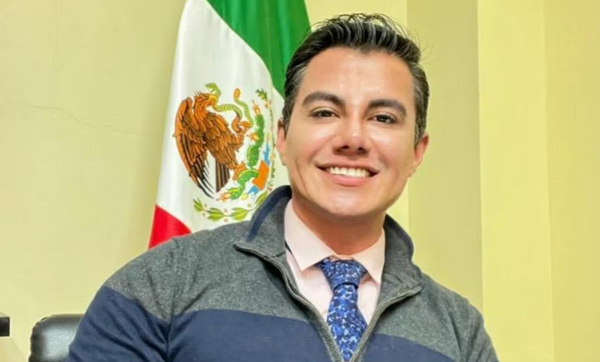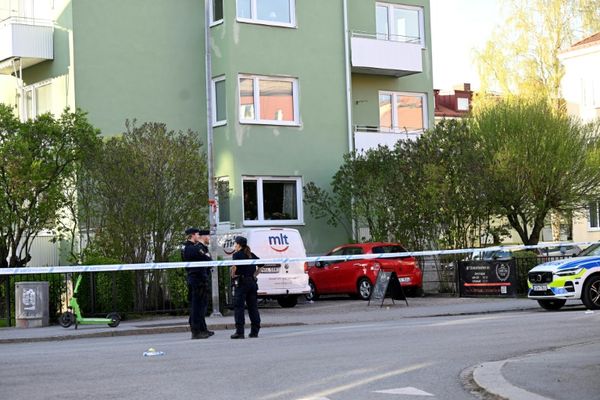LVIV, Ukraine — Ukrainian officials claimed Saturday they had clawed back most of Kyiv and its surroundings even as they warned of new dangers: land mines planted by withdrawing Russian forces and revived Russian pushes in the east.
Ukrainian President Volodymyr Zelenskyy warned that Russian troops were seeding northern areas of Ukraine with mines as Moscow increasingly focused its offensive thrust on the eastern Donbas region — home of two self-proclaimed republics loyal to Russia.
His military leaders said Russian forces were attempting to encircle Ukrainian troops in parts of the Donbas and pulling away from the capital, Kyiv. They also said Ukrainian forces were now in control of Kyiv and many of the suburbs that Russia had attempted to occupy, although that could not be verified independently.
Also Saturday, the Interfax Ukraine news agency quoted Ukrainian Foreign Minister Dmytro Kuleba as saying Moscow now seemed prepared to agree to face-to-face talks between the two countries’ presidents. Such a meeting could represent a turning point in the conflict, although Western diplomats and others said they remained skeptical of Russian President Vladimir Putin’s intentions and negotiating tactics.
Zelenskyy warned that the dangers in his country remained real and potent.
“It’s still not possible to return to normal life, as it used to be, even at the territories that we are taking back after the fighting,” he said. “They are mining all this territory. Mining houses, equipment, even the bodies of killed people. Too many trip-wire mines, too many other dangers ....”
Meanwhile, as shelling and attacks continued across the country, new evacuations were planned from war-ravaged areas in the north and east, including the devastated port city of Mariupol.
According to Zelenskyy, more than 6,000 people were evacuated from war zones Friday through so-called humanitarian corridors, exit routes jointly agreed upon by Ukrainian and Russian officials. More than half of those evacuees were from Mariupol.
The International Committee of the Red Cross said it was planning a large-scale evacuation of residents from Mariupol again Saturday after efforts Friday were deemed too risky. Ukrainian officials said several hundred civilians made it out of Mariupol on their own Saturday but continued to await word on the Red Cross mission.
Mariupol, along the Sea of Azov in the Donbas region, has emerged as a potent symbol of the destruction and loss of life that have characterized the war. Tens of thousands of residents are reportedly trapped in Mariupol with limited access to food, water and medical care as Ukrainian defenders struggle to hold on against advancing Russian forces.
Images of Mariupol, once a city of more than 400,000, reveal empty apartment blocks and shopping centers blackened from shelling. Much of the population has fled.
In a forceful condemnation clearly directed at Putin, Pope Francis denounced a “potentate” who launched a “savage” war that included the threat of nuclear attack in an “infantile and destructive aggression.”
“We had thought that invasions of other countries, savage street fighting and atomic threats were grim memories of a distant past,” Francis said during a trip to Malta. He said he was considering visiting the beleaguered city of Kyiv.
Some Vatican watchers have suggested the pope would pull his punches in speaking of the war to avoid antagonizing Putin and his close ally, the Russian Orthodox Church. But the new comments left no room for doubt over where Francis placed the blame for the brutal onslaught.
The war, now in its 38th day, has left thousands dead, forced almost one-quarter of Ukraine’s population of 44 million from their homes, and created a broad swath of destruction across the nation.
Zelenskyy in an overnight video warned people to avoid returning to areas previously under Russian control until authorities are sure that mines had been cleared and the threat of shelling had abated.
The president described the situation in the country’s east as “extremely difficult,” as Russia bolstered troop strength and prepared for new attacks. Moscow has said its forces are concentrating on the east, where Russia has backed pro-Moscow separatist forces since 2014. The Pentagon earlier this week confirmed a portion of the Russian forces were pulling back but with a yet unknown final destination.
Ukrainian troops backed by a column of tanks and armored vehicles moved farther north from Kyiv to Bucha, the Associated Press reported. The AP said its reporters counted six bodies of civilians scattered along a street and in the front yard of a house.
“I emphasize again: Hard battles lie ahead,” Zelenskyy said.
The British Defense Ministry reported that Ukrainian troops continued to advance in the Kyiv area as Russian forces pulled out.
As the Russians have withdrawn, viral video images show vast destruction and bodies on the streets of once-occupied cities such as Irpin and Bucha.
On Saturday, Ukrainian authorities reported predawn Russian missile strikes on the central cities of Kremenchuk, home of a major refinery, and Poltava. There was no immediate word on casualties. Firefighters were struggling to douse flames in Kremenchuk, an industrial hub.
The missile strikes Saturday came a day after a stunning attack on an oil depot in the Russian city of Belgorod, about 20 miles north of the Ukrainian border. It was the first such attack on Russian soil since the Russian invasion of Ukraine.
Russian authorities blamed the attack on Ukrainian military helicopters. But Ukrainian authorities did not claim responsibility for the strike.
As the war ground on, the grim toll in deaths and displacement continued to mount.
In the western city of Lviv, largely spared destruction so far, there was more evidence of the human costs. Military funerals were held for two more soldiers killed in the fighting. Their coffins were carried along cobblestone streets for services at the venerable Church of Saints Peter and Paul. Weeping mourners stood outside in the cold before entering the church. Such funerals have become an almost daily occurrence here.
Meanwhile, a mile-and-a-half away at the 19th-century train station, evacuees from the east and north of Ukraine continued to arrive. Many planned to continue onward to Poland and elsewhere in Europe, joining the ongoing mass exodus sparked by the war.
“We didn’t want to leave — we waited a month to see how it went,” said Olga Gremova, 41, a resident of the city of Kharkiv in northeast Ukraine. “But then the shelling became too much. It was too dangerous.”
She was among many waiting in line outside the station for a bus to Warsaw, the Polish capital. Accompanying her was her daughter, Kateryna, 15, and Veronica Gubarenko, 16, a friend of the family who also is from Kharkiv. They shared bread and a hot meal handed out by volunteers. All bundled up from the extreme cold. The morning saw snow flurries, belying the onset of spring.
“We were happy in Kharkiv, we had our family, our friends,” said Gremova, who was overcome with emotion as she spoke. “We left everything behind. But we all want to go home again. Hopefully that will be soon. I really don’t know anything about Poland. We hope this war will end soon and we can go back home.”
———
(L.A. Times staff writer Tracy Wilkinson in Washington contributed to this report.)
———







